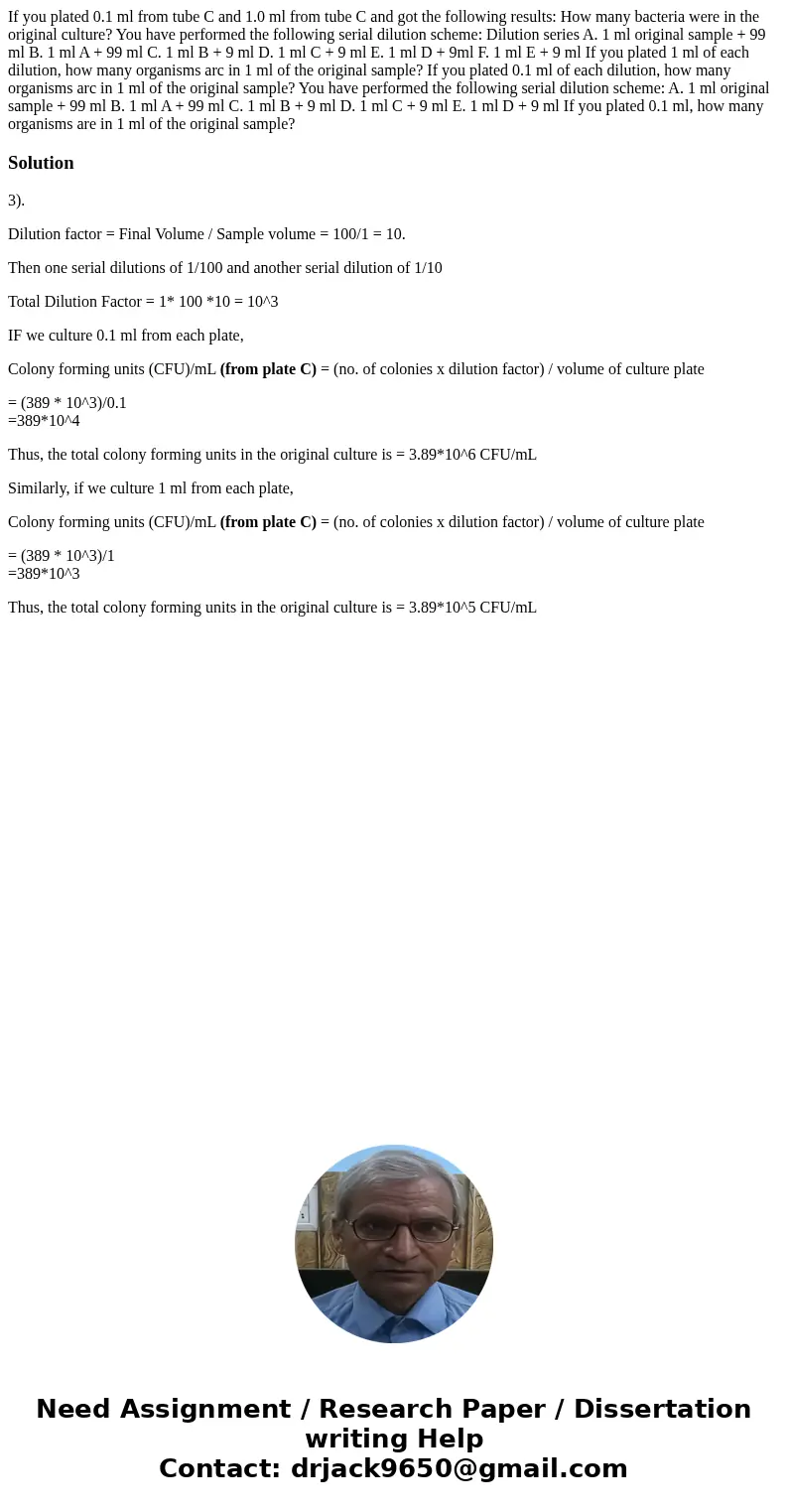If you plated 01 ml from tube C and 10 ml from tube C and go
If you plated 0.1 ml from tube C and 1.0 ml from tube C and got the following results: How many bacteria were in the original culture? You have performed the following serial dilution scheme: Dilution series A. 1 ml original sample + 99 ml B. 1 ml A + 99 ml C. 1 ml B + 9 ml D. 1 ml C + 9 ml E. 1 ml D + 9ml F. 1 ml E + 9 ml If you plated 1 ml of each dilution, how many organisms arc in 1 ml of the original sample? If you plated 0.1 ml of each dilution, how many organisms arc in 1 ml of the original sample? You have performed the following serial dilution scheme: A. 1 ml original sample + 99 ml B. 1 ml A + 99 ml C. 1 ml B + 9 ml D. 1 ml C + 9 ml E. 1 ml D + 9 ml If you plated 0.1 ml, how many organisms are in 1 ml of the original sample?
Solution
3).
Dilution factor = Final Volume / Sample volume = 100/1 = 10.
Then one serial dilutions of 1/100 and another serial dilution of 1/10
Total Dilution Factor = 1* 100 *10 = 10^3
IF we culture 0.1 ml from each plate,
Colony forming units (CFU)/mL (from plate C) = (no. of colonies x dilution factor) / volume of culture plate
= (389 * 10^3)/0.1
=389*10^4
Thus, the total colony forming units in the original culture is = 3.89*10^6 CFU/mL
Similarly, if we culture 1 ml from each plate,
Colony forming units (CFU)/mL (from plate C) = (no. of colonies x dilution factor) / volume of culture plate
= (389 * 10^3)/1
=389*10^3
Thus, the total colony forming units in the original culture is = 3.89*10^5 CFU/mL

 Homework Sourse
Homework Sourse